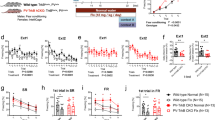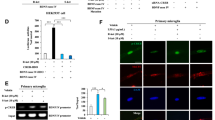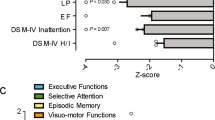Abstract
Regulation of gene expression is purported as a major component in the long-term action of antidepressants. The transcription factor cAMP-response element-binding protein (CREB) is activated by chronic antidepressant treatments, although a number of studies reported different effects on CREB, depending on drug types used and brain areas investigated. Furthermore, little is known as to what signaling cascades are responsible for CREB activation, although cAMP-protein kinase A (PKA) cascade was suggested to be a central player. We investigated how different drugs (fluoxetine (FLX), desipramine (DMI), reboxetine (RBX)) affect CREB expression and phosphorylation of Ser133 in the hippocampus and prefrontal/frontal cortex (PFCX). Acute treatments did not induce changes in these mechanisms. Chronic FLX increased nuclear phospho-CREB (pCREB) far more markedly than pronoradrenergic drugs, particularly in PFCX. We investigated the function of the main signaling cascades that were shown to phosphorylate and regulate CREB. PKA did not seem to account for the selective increase of pCREB induced by FLX. All drug treatments markedly increased the enzymatic activity of nuclear Ca2+/calmodulin (CaM) kinase IV (CaMKIV), a major neuronal CREB kinase, in PFCX. Activation of this kinase was due to increased phosphorylation of the activatory residue Thr196, with no major changes in the expression levels of α- and β-CaM kinase kinase, enzymes that phosphorylate CaMKIV. Again in PFCX, FLX selectively increased the expression level of MAP kinases Erk1/2, without affecting their phosphorylation. Our results show that FLX exerts a more marked effect on CREB phosphorylation and suggest that CaMKIV and MAP kinase cascades are involved in this effect.
Similar content being viewed by others
Log in or create a free account to read this content
Gain free access to this article, as well as selected content from this journal and more on nature.com
or
References
Bading H, Ginty DD, Greenberg ME (1993). Regulation of gene expression in hippocampal neurons by distinct calcium signaling pathways. Science 260: 181–186.
Bading H, Greenberg ME (1991). Stimulation of protein tyrosine phosphorylation by NMDA receptor activation. Science 253: 912–914.
Bito H, Deisseroth K, Tsien RW (1996). CREB phosphorylation and dephosphorylation: a Ca(2+)- and stimulus duration-dependent switch for hippocampal gene expression. Cell 87: 1203–1214.
Celano E, Tiraboschi E, Consogno E, D'Urso G, Mbakop MP, Gennarelli M et al (2003). Selective regulation of presynaptic calcium/calmodulin-dependent protein kinase II by psychotropic drugs. Biol Psychiatry 53: 442–449.
Chen AC, Shirayama Y, Shin K, Neve RL, Duman RS (2001). Expression of the cAMP response element binding protein (CREB) in hippocampus produces an antidepressant effect. Biol Psychiatry 49: 753–762.
Chen J, Rasenick MM (1995). Chronic antidepressant treatment facilitates G protein activation of adenylyl cyclase without altering G protein content. J Pharmacol Exp Ther 275: 509–517.
Dash PK, Karl KA, Colicos MA, Prywes R, Kandel ER (1991). cAMP response element-binding protein is activated by Ca2+/calmodulin- as well as cAMP-dependent protein kinase. Proc Natl Acad Sci USA 88: 5061–5065.
Deak M, Clifton AD, Lucocq LM, Alessi DR (1998). Mitogen- and stress-activated protein kinase-1 (MSK1) is directly activated by MAPK and SAPK2/p38, and may mediate activation of CREB. EMBO J 17: 4426–4441.
De Cesare D, Fimia GM, Sassone-Corsi P (1999). Signaling routes to CREM and CREB: plasticity in transcriptional activation. Trends Biochem Sci 24: 281–285.
De Cesare D, Jacquot S, Hanauer A, Sassone-Corsi P (1998). Rsk-2 activity is necessary for epidermal growth factor-induced phosphorylation of CREB protein and transcription of c-fos gene. Proc Natl Acad Sci USA 95: 12202–12207.
Donati RJ, Rasenick MM (2003). G protein signaling and the molecular basis of antidepressant action. Life Sci 73: 1–17.
Dowlatshahi D, MacQueen GM, Wang JF, Young LT (1998). Increased temporal cortex CREB concentrations and antidepressant treatment in major depression. Lancet 352: 1754–1755.
Duman RS, Malberg J, Thome J (1999). Neural plasticity to stress and antidepressant treatment. Biol Psychiatry 46: 1181–1191.
Dwivedi Y, Rao JS, Rizavi HS, Kotowski J, Conley RR, Roberts RC et al (2003). Abnormal expression and functional characteristics of cyclic adenosine monophosphate response element binding protein in postmortem brain of suicide subjects. Arch Gen Psychiatry 60: 273–282.
Einat H, Yuan P, Gould TD, Li J, Du J, Zhang L et al (2003). The role of the extracellular signal-regulated kinase signaling pathway in mood modulation. J Neurosci 23: 7311–7316.
Enslen H, Sun P, Brickey D, Soderling SH, Klamo E, Soderling TR (1994). Characterization of Ca2+/calmodulin-dependent protein kinase IV. Role in transcriptional regulation. J Biol Chem 269: 15520–15527.
Frechilla D, Otano A, Del Rio J (1998). Effect of chronic antidepressant treatment on transcription factor binding activity in rat hippocampus and frontal cortex. Prog Neuropsychopharmacol Biol Psychiatry 22: 787–802.
Ghosh A, Ginty DD, Bading H, Greenberg ME (1994). Calcium regulation of gene expression in neuronal cells. J Neurobiol 25: 294–303.
Ginty DD, Bonni A, Greenberg ME (1994). Nerve growth factor activates a Ras-dependent protein kinase that stimulates c-fos transcription via phosphorylation of CREB. Cell 77: 713–725.
Hagiwara M, Alberts A, Brindle P, Meinkoth J, Feramisco J, Deng T et al (1992). Transcriptional attenuation following cAMP induction requires PP-1-mediated dephosphorylation of CREB. Cell 70: 105–113.
Hagiwara M, Brindle P, Harootunian A, Armstrong R, Rivier J, Vale W et al (1993). Coupling of hormonal stimulation and transcription via the cyclic AMP-responsive factor CREB is rate limited by nuclear entry of protein kinase A. Mol Cell Biol 13: 4852–4859.
Kandel ER (2001). The molecular biology of memory storage: a dialogue between genes and synapses. Science 294: 1030–1038.
Kasahara J, Fukunaga K, Miyamoto E (1999). Differential effects of a calcineurin inhibitor on glutamate-induced phosphorylation of Ca2+/calmodulin-dependent protein kinases in cultured hippocampal neurons. J Biol Chem 274: 9061–9067.
Kasahara J, Fukunaga K, Miyamoto E (2001). Activation of calcium/calmodulin-dependent protein kinase IV in long term potentiation in the rat hippocampal CA1 region. J Biol Chem 276: 24044–24050.
Kida S, Josselyn SAV, de Ortiz SP, Kogan JH, Chevere I, Masushige S et al (2002). CREB required for the stability of new and reactivated fear memories. Nat Neurosci 5: 348–355.
Kitani T, Okuno S, Fujisawa H (1997). Molecular cloning of Ca2+/calmodulin-dependent protein kinase kinase beta. J Biochem 122: 243–250.
Lonze BE, Ginty DD (2002). Function and regulation of CREB family transcription factors in the nervous system. Neuron 35: 605–623.
Mabuchi T, Kitagawa K, Kuwabara K, Takasawa K, Ohtsuki T, Xia Z et al (2001). Phosphorylation of cAMP response element-binding protein in hippocampal neurons as a protective response after exposure to glutamate in vitro and ischemia in vivo. J Neurosci 21: 9204–9213.
Manier DH, Shelton RC, Sulser F (2002). Noradrenergic antidepressants: does chronic treatment increase or decrease nuclear CREB-P? J Neural Transm 109: 91–99.
Manji HK, Quiroz JA, Sporn J, Payne JL, Denicoff KA, Gray N et al (2003). Enhancing neuronal plasticity and cellular resilience to develop novel, improved therapeutics for difficult-to-treat depression. Biol Psychiatry 53: 707–742.
Merienne K, Jacquot S, Zeniou M, Pannetier S, Sassone-Corsi P, Hanauer A (2000). Activation of RSK by UV-light: phosphorylation dynamics and involvement of the MAPK pathway. Oncogene 19: 4221–4229.
Morgan JI, Curran T (1986). Role of ion flux in the control of c-fos expression. Nature 322: 552–555.
Nakamura Y, Okuno S, Sato F, Fujisawa H (1995). An immunohistochemical study of Ca2+/calmodulin-dependent protein kinase IV in the rat central nervous system: light and electron microscopic observations. Neuroscience 68: 181–194.
Nestler EJ, Barrot M, DiLeone RJ, Eisch AJ, Gold SJ, Monteggia LM (2002). Neurobiology of depression. Neuron 34: 13–25.
Nestler EJ, Terwilliger RZ, Duman RS (1989). Chronic antidepressant administration alters the subcellular distribution of cyclic AMP-dependent protein kinase in rat frontal cortex. J Neurochem 53: 1644–1647.
Nibuya M, Nestler EJ, Duman RS (1996). Chronic antidepressant administration increases the expression of cAMP response element binding protein (CREB) in rat hippocampus. J Neurosci 16: 2365–2372.
Perez J, Tardito D, Mori S, Racagni G, Smeraldi E, Zanardi R (2000). Abnormalities of cAMP signaling in affective disorders: implication for pathophysiology and treatment. Bipolar Disorders 2: 27–36.
Perez J, Tinelli D, Brunello N, Racagni G (1989). cAMP-dependent phosphorylation of soluble and crude microtubule fractions of rat cerebral cortex after prolonged desmethylimipramine treatment. Eur J Pharmacol 172: 305–316.
Pittinger C, Huang YY, Paletzki RF, Bourtchouladze R, Scanlin H, Vronskaya S et al (2002). Reversible inhibition of CREB/ATF transcription factors in region CA1 of the dorsal hippocampus disrupts hippocampus-dependent spatial memory. Neuron 34: 447–462.
Popoli M, Brunello N, Perez J, Racagni G (2000). Second messenger-regulated protein kinases in the brain: their functional role and the action of antidepressant drugs. J Neurochem 74: 21–33.
Reppert SM, Weaver DR (2001). Molecular analysis of mammalian circadian rhythms. Annu Rev Physiol 63: 647–676.
Reusch JE, Hsieh P, Klemm D, Hoeffler J, Draznin B (1994). Insulin inhibits dephosphorylation of adenosine 3′,5′-monophosphate response element-binding protein/activating transcription factor-1: effect on nuclear phosphoserine phosphatase-2a. Endocrinology 135: 2418–2422.
Schwaninger M, Schofl C, Blume R, Rossig L, Knepel W (1995). Inhibition by antidepressant drugs of cyclic AMP response element-binding protein/cyclic AMP response element-directed gene transcription. Mol Pharmacol 47: 1112–1118.
Sheng M, McFadden G, Greenberg ME (1990). Membrane depolarization and calcium induce c-fos transcription via phosphorylation of transcription factor CREB. Neuron 4: 571–582.
Sheng M, Thompson MA, Greeberg ME (1991). CREB: a Ca2+-regulated transcription factor phosphorylated by calmodulin-dependent kinase. Science 252: 1427–1430.
Soderling TR (1999). The Ca2+/calmodulin-dependent protein kinase cascade. TIBS 24: 232–236.
Takeuchi F, Ishida A, Kameshita I, Kitani T, Okuno S, Fujisawa H (2001). Identification and characterization of CaMKP-N, nuclear calmodulin-dependent protein kinase phosphatase. J Biochem 130: 833–840.
Tardito D, Tiraboschi E, Perez J, Racagni G, Popoli M (2004). Signaling pathways regulating gene expression, neuroplasticity and neurotrophic mechanisms in the action of antidepressants. A critical overview. Psychopharmacol Bull 38: in press.
Thome J, Sakai N, Shin K, Steffen C, Zhang YJ, Impey S et al (2000). cAMP response element-mediated gene transcription is upregulated by chronic antidepressant treatment. J Neurosci 20: 4030–4036.
Tokumitsu H, Enslen H, Soderling TR (1995). Characterization of a Ca2+/calmodulin-dependent protein kinase cascade. Molecular cloning and expression of calcium/calmodulin-dependent protein kinase kinase. J Biol Chem 270: 19320–19324.
Verona M, Zanotti S, Schafer T, Racagni G, Popoli M (2000). Changes of synaptotagmin interaction with t-SNARE proteins in vitro after calcium/calmodulin-dependent phosphorylation. J Neurochem 74: 209–221.
West AE, Griffith EC, Greenberg ME (2002). Regulation of transcription factors by neuronal activity. Nat Rev 3: 921–931.
Westphal RS, Anderson KA, Means AR, Wadzinski BE (1998). A signaling complex of Ca2+-calmodulin-dependent protein kinase IV and protein phosphatase 2A. Science 280: 1258–1261.
Xing J, Ginty DD, Greenberg ME (1996). Coupling of the RAS-MAPK pathway to gene activation by RSK2, a growth factor-regulated CREB kinase. Science 273: 959–963.
Acknowledgements
This work was supported by a grant from the National Alliance for Research on Schizophrenia and Depression (USA) to MP and by grants from the Ministry of University and Scientific Research (COFIN) and Ministry of Health (Italy) to MP and GR.
Author information
Authors and Affiliations
Corresponding author
Rights and permissions
About this article
Cite this article
Tiraboschi, E., Tardito, D., Kasahara, J. et al. Selective Phosphorylation of Nuclear CREB by Fluoxetine is Linked to Activation of CaM Kinase IV and MAP Kinase Cascades. Neuropsychopharmacol 29, 1831–1840 (2004). https://doi.org/10.1038/sj.npp.1300488
Received:
Revised:
Accepted:
Published:
Issue date:
DOI: https://doi.org/10.1038/sj.npp.1300488
Keywords
This article is cited by
-
5-HT attenuates chronic stress-induced cognitive impairment in mice through intestinal flora disruption
Journal of Neuroinflammation (2023)
-
CaMKIV/CREB/BDNF signaling pathway expression in prefrontal cortex, amygdala, hippocampus and hypothalamus in streptozotocin-induced diabetic mice with anxious-like behavior
Experimental Brain Research (2022)
-
Chronically altered NMDAR signaling in epilepsy mediates comorbid depression
Acta Neuropathologica Communications (2021)
-
Nicotine Rescues Depressive-like Behaviors via α7-type Nicotinic Acetylcholine Receptor Activation in CaMKIV Null Mice
Molecular Neurobiology (2020)
-
An increase in plasma brain derived neurotrophic factor levels is related to n-3 polyunsaturated fatty acid efficacy in first episode schizophrenia: secondary outcome analysis of the OFFER randomized clinical trial
Psychopharmacology (2019)



